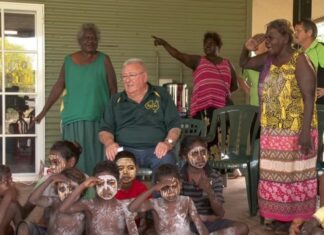A little over five percent of Queensland is designated national park, the lowest in Australia and a tiny proportion compared to other States and Territories. Given that, you’d think that we in Queensland would put in a greater effort to retain our parks in a pristine, wilderness state. But it was the Bligh Labor government back in 2010 who decided ecotourism within and adjacent to national parks would be a good idea.
One of the eco-tourism developments was to be the Cooloola Great Walk, which begins in the Noosa Shire. It’s about 100 kilometres long walk, has four camping areas and takes five days for trekkers. It’s a stunning walk, linking the Noosa North shore to Rainbow Beach via the eastern high dunes, the upper Noosa River and Poona Lake.
Following the announcement in 2010, $1.35m was spent to open the walk and in 2013 the Nature Conservation Act was amended the Newman LNP government, allowing private development in national parks.
In the years since, the push towards private ownership of ecotourism projects in National Parks has grown. By 2017, former Labor Tourism Minister Kate Jones would remark that “Queensland is not cashing in on (its) stunning destinations”. Companies in other States are now looking to develop Queensland’s national parks.
One of these is South Australian company, CABN, which is 50% owned by Intrepid Travel. Liz Savage, a non-Executive Director of Intrepid, was a colleague of former CEO at Virgin Australia Brett Godrey, who is a shareholder in Australian and Tasmanian Walking Companies. These companies have invested in ecotourism operations in national parks, including in the Scenic Rim and on Hinchenbrook Island. In February 2020, the Queensland Government announced that CABN was the preferred proponent to develop the Cooloola Great Walk.
This development has permanent infrastructure for private, commercial use at five sites. These sites include some of the most ecologically sensitive and socially important locations in the National Park.
Since the details of the CABN proposal have been made public, questions have been raised about whether this development is appropriate for our National Park and the neighbouring Great Sandy National Park. The big question is: Is it acceptable for commercial development to take place in national parks at all? The campsite in Noosa Shire, for example, is one of only two in the world’s sensitive Everglades systems.
I take the view that allowing National Parks to be enjoyed is beneficial for all Queenslanders and visitors – helping us to connect with the natural environment. However, opening these often fragile lands should be managed by government on behalf of taxpayers, not by private companies making profits for shareholders.
Some people believe that government can never do as good a job managing tourism operations as private business. I see their point, but the difference is that in National Parks ecotourism projects should be publicly owned and run in the interests of the land, the environment and the community, not a private company. If the Queensland government retains the ownership of ecotourism projects, revenue generated can be directed back to the National Parks. Additionally, running these projects within the Queensland Government reduces the information about developments being kept secret due to “commercial-in-confidence” justifications.
While the privatisation and development of the Cooloola Great Walk rests currently with State and Federal Government (Native Title) processes, if approved it will come to Noosa and Gympie Councils as a Development Approval application. Some 15,000 petitioners to the Queensland environment minister are hoping it does not get to that stage.
Finally, I say from my Soapbox, let’s do the best by our National Parks by building ecotourism projects alongside them, not inside them. With only five percent of our land set aside for Nature, I don’t think this is too much to ask.







